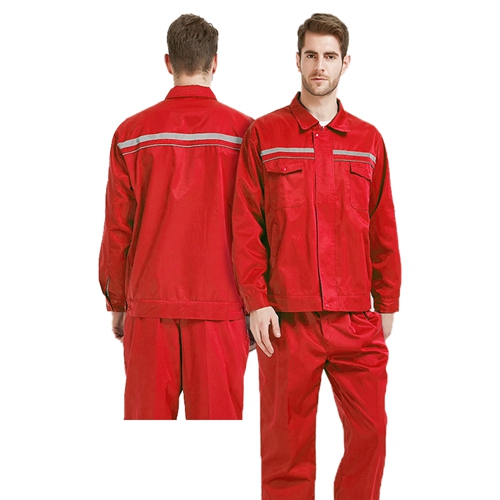Safety Helmets Meeting BS EN 397 Standards for Enhanced Protection and Reliability
Understanding BS EN 397 Safety Helmet Standards
Safety helmets are essential personal protective equipment (PPE) designed to protect the head from various hazards including impacts, penetration, and electrical risks. The BS EN 397 standard outlines the specifications and requirements for industrial safety helmets, ensuring they provide the required level of protection in various working environments. This article will delve into the significance of BS EN 397, the testing standards it encompasses, and its implications for both manufacturers and end-users.
Importance of BS EN 397
BS EN 397 is a European standard that specifies the performance requirements for safety helmets used in industrial environments. The primary goal of this standard is to ensure that helmets provide adequate protection against head injuries arising from falls, struck-by incidents, and exposure to other workplace hazards. This standard is crucial for various industries such as construction, manufacturing, and forestry, where workers are at significant risk for head injuries.
Safety helmets compliant with BS EN 397 are subjected to rigorous testing to verify their durability and protection capabilities. The standard encompasses criteria related to impact resistance, penetration resistance, and the helmet’s ability to remain on the wearer’s head during an impact. By adhering to these standards, manufacturers can assure consumers that their products meet stringent safety requirements.
Key Requirements of BS EN 397
The BS EN 397 standard outlines several critical performance requirements that safety helmets must meet
1. Impact Resistance Helmets must withstand a significant impact from a specific height without causing injury to the skull. The standard tests the helmet's ability to absorb impacts, simulating conditions it would encounter in real-world scenarios.
2. Penetration Resistance The helmet is subjected to tests involving sharp objects to ensure it can resist penetration that could potentially cause head injuries.
3. Lateral Deformation This aspect evaluates how the helmet deforms under lateral pressure. A helmet must not deform excessively when subjected to sideways pressure, thus maintaining a protective barrier for the wearer.
4. Chin Strap Performance The chin strap is critical in ensuring that the helmet stays securely in place during an impact. The standard specifies tests to assess the strength and reliability of the chin strap.
bs en 397 safety helmet products

5. Comfort and Stability Helmets must also be designed to ensure comfort over prolonged periods of use, with proper ventilation and weight distribution. A well-fitted helmet is more likely to be worn consistently by workers.
6. Electrical Properties Certain environments present electrical hazards, necessitating helmets that can provide electrical insulation. The BS EN 397 standard details specific requirements for helmets exposed to electrical threats.
Implications for Manufacturers
For manufacturers, compliance with BS EN 397 is not just about legal obligations; it is also a matter of reputation and marketability. Helmets that meet these standards are more likely to gain trust from consumers, leading to increased sales and market presence. Moreover, adhering to safety standards mitigates the risk of product liability claims stemming from injuries caused by defective headgear.
Manufacturers must invest in state-of-the-art testing facilities and research to remain compliant with evolving standards and maintain product efficacy. Continuous innovation is crucial, as advancements in materials and design technologies can enhance the protective capabilities of safety helmets.
Role of Employers and Workers
Employers are responsible for ensuring that their workers are provided with appropriate PPE, including safety helmets that comply with BS EN 397. This commitment is not only a legal mandate in many jurisdictions but also a moral obligation to safeguard the health and well-being of employees.
Workers, on the other hand, must be educated about the importance of wearing safety helmets and the differences between compliant and non-compliant models. Training programs can empower employees to make informed decisions and encourage a culture of safety within the workplace.
Conclusion
BS EN 397 is a pivotal standard for safety helmets in industrial settings, offering guidelines that protect millions of workers worldwide. Understanding and adhering to these standards not only enhances the protective capabilities of helmets but also fosters a culture prioritizing safety in potentially hazardous environments. As industries evolve, the commitment to maintaining high standards of safety will remain a cornerstone in the preventative measures against workplace injuries.
-
Top HDPE Safety Helmets - Lightweight, Durable Head Protection
NewsAug.01,2025
-
Top AI Safety Clothing with GPT-4 Turbo | Smart Protection
NewsJul.31,2025
-
Face Shield Safety Helmet with GPT-4 Turbo AI Safety
NewsJul.31,2025
-
CE Working Clothing for Construction & Welding Safety
NewsJul.30,2025
-
Premium Safety Helmet with Visor for Construction & Industrial Use
NewsJul.29,2025
-
High-Quality CE Working Clothing for Safety and Construction
NewsJul.29,2025
